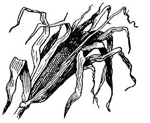The Wildlife Web I - Teacher's Guide |
Episode Overview In the first segment, Patrice looks at how plants make food and at how and plants and plant eating animals depend on each other. Next, she and Dave examine an area and discuss the how plants found there could provide food for moose and other herbivores. In segment three, we take an up-close look at the moose and its habitat. Finally, Olivia and Michael visit with Professor Brent Loy, who is producing melons that grow more quickly, bigger and sweeter. In the first segment, Patrice looks at how plants make food and at how and plants and plant eating animals depend on each other. Next, she and Dave examine an area and discuss the how plants found there could provide food for moose and other herbivores. In segment three, we take an up-close look at the moose and its habitat. Finally, Olivia and Michael visit with Professor Brent Loy, who is producing melons that grow more quickly, bigger and sweeter.
Program ObjectivesStudents will:1. Investigate and understand that organisms depend on other organisms and nonliving components of the environment for survival. 2. Describe how plants and animals in an ecosystem interact. 3. Describe how plants get their energy from the sun. 4. Analyze adaptations exhibited by herbivores. 5. Recognize the distinct characteristics of the moose. 6. Analyze the role played by the moose in its environment. Vocabulary
Previewing ActivityCreate a two column list. Label one column animal, the other column plants. Using the school's lunch menu for the day, have students identify whether foods on the menu come from a plant or an animal. In cases where foods come from both, put the food in both categories. Post-Viewing Activities1. Using the list generated for the previewing activity, have students further discuss the foods on the list, tracing each one back to a plant and then the sun. 2. Have students list all of the food they have eaten during the day. For each thing eaten, have the student describe the food's relationship to a plant. For example, if a student had eggs for breakfast, they should identify the eggs as having come from a chicken and the chicken as having gotten its food from the seeds of plants. Next have the students create a poster tracing the source of one of the foods on their list.
|
Hands-On: Plant DetectivesIn this episode of NatureWorks, students learned about the relationship between producers and consumers. In this activity students will look at trace the ingredients in the foods they eat to plants. Materials Neededfood labels from a variety of foods ProcedurePass out labels from a variety of foods to students - candy bars, cookies, cheese, tuna ... Have the students trace the source of the ingredients to plants. For example, the milk in cheese comes from cows that eat plants. The chocolate in candy comes from the cacao plant. The sugar in cookies comes from sugar cane. Have students select one label and create a detailed plant-based ingredient report for that label. Hands-On: Here Comes the SunIn this episode of NatureWorks, students learned about the important role the sun plays in the natural world. In this activity they will explore the results sunshine or lack of sunshine can have on plants. Materials Neededgrassy area of the school yard ProcedureThis activity needs to be done when the grass is green! Stake out a grassy area of the school yard. (You'll want to pick an area that won't be disturbed by other students or mowed over and where you won't get in trouble for letting the grass die!) Additional ResourcesWeb SitesThe Great Plant Escape Learn about plants as you solve a series of plant mysteries at this site from the University of Illinois for K-6 students.
|
